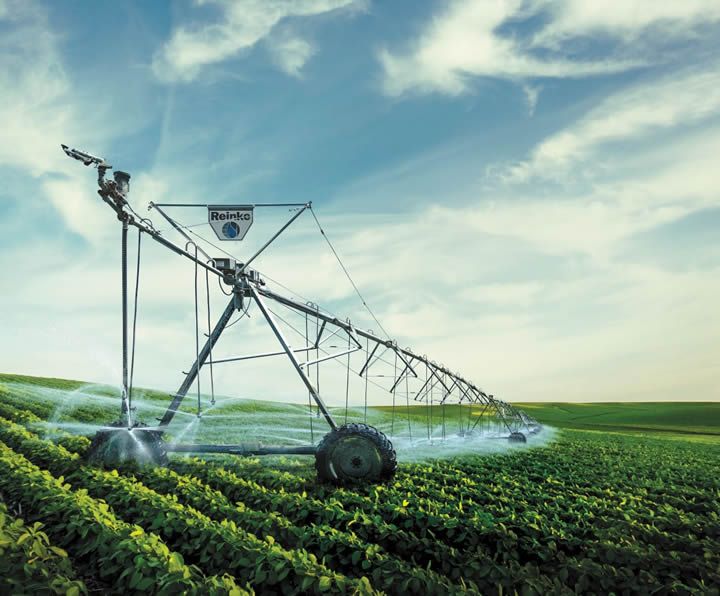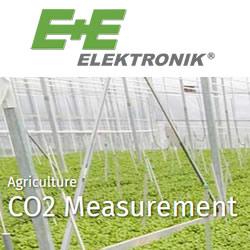Compared with previous irrigation methods, pivot systems have been a primary driver of water conservation in irrigated agriculture. However, with the technology available now, they can perform even better – benefiting farmers as well as the planet.
 A Pivotal Point for Remote Irrigation Control
A Pivotal Point for Remote Irrigation Control

Article from | Freewave
The invention of center-pivot irrigation in the 1940s turned the High Plains — previously decimated by drought cycles and crop failures culminating in the catastrophic Dust Bowl of the 1930s — into one of the most agriculturally productive regions in the world. Center-pivot irrigation systems are still widely used because — at the enterprise level — they improve operational efficiencies and increase yields. Compared with previous irrigation methods, pivot systems have been a primary driver of water conservation in irrigated agriculture. However, with the technology available now, they can perform even better – benefiting farmers as well as the planet.
They say history repeats itself. Sure enough, High Plains ranchers and farmers are once again experiencing water scarcity — a problem that’s been decades in the making. In 2013, the journal Proceedings of the National Academy of Science (PNAS) reported that if the aquifer depletion rate continues unabated, 35 percent of the southern High Plains will be unable to support irrigation by 2043. Clearly, the future of High Plains agriculture depends on water conservation and farmers’ ongoing willingness to be excellent stewards of natural resources so they can carry on with their mission to feed the world.
Fortunately, forward-thinking farmers are taking action and turning to precision irrigation practices to optimize water use. And it doesn’t require a complete infrastructure overhaul. By adding Wi-Fi-connected monitoring devices to their existing pivot irrigation systems, farmers gain remote, real-time visibility of water use and loss, thereby reducing on-site inspections and their associated labor and energy costs. An integrated remote monitoring system also sends weather and soil moisture data so farmers can make on-the-go decisions about water application schedules and rates based on actual conditions — but only if data transmission is swift and reliable.

Irrigation and Water Conservation — Making the Connection
That’s where FreeWave Technologies comes in with connectivity solutions for remote agricultural asset management. Partnering with precision irrigation equipment manufacturer Reinke Manufacturing, FreeWave offers remote monitoring solutions that seamlessly transfer actionable data in real-time to farmers’ smartphones or computers so they can make precisely needed water applications, as determined by what’s happening – or expected to happen – with the crops and their surroundings from one zone to the next.
Remote irrigation control solutions typically consist of smart sensors or gauges that collect data; a networking gateway that transmits the data; and software that analyzes and presents the data to the farmer via an on-screen interface. From this control panel, farmers can monitor and adjust water use, including irrigation timing and other factors, to minimize waste and maximize yields. For example, sometimes more water is needed to optimize water use efficiency per bushel produced, providing more food for the planet. In other cases, a crop actually achieves its fullest potential using less water. Remote monitoring systems supply farmers with the data and assessments they need to make these calls, whether on- or off-site.
Receiving alerts and reacting quickly to emergent issues depends on reliable connectivity. So, too, does cloud computing, which is the typical means of data analysis in most precision irrigation systems. Cloud computing aggregates data from on-farm monitoring devices with weather station updates and other information to help guide farmers’ day-to-day decisions and strategic planning.
In this case, the FreeWave bridge establishes reliable connectivity and delivers the data to Reinke’s ReinCloud® service for processing. The solution has the capacity to connect multiple irrigation systems through one gateway, giving farmers remote control of select systems or their entire irrigation infrastructure. ReinCloud’s customizable dashboard organizes and presents all the incoming data in whatever format works best for the user. Notifications keep farmers apprised of ambient conditions and system performance and alerts them should problems occur or conditions arise that affect water application needs or require equipment maintenance or repair. Amassed data can be used for trend analysis and forecasting.
The Way of the Future - More Crop Per Drop
Taking water conservation measures to the next level, Reinke’s center-pivot systems can be manufactured or retrofitted for variable rate irrigation (VRI). Unlike conventional automated irrigation systems with their preset schedules and uniform applications, VRI systems allow farmers to change water rates from one irrigation event to the next or to apply different rates in various zones of a field during a single event. That technological advance, along with remote monitoring capabilities and reliable connectivity, ensures pivot irrigation will persist into the future.
Conventional irrigation methods could benefit from similar upgrades, as well. Irrigation methods that aren’t yet sensor-monitored and wirelessly connected might actually contribute to water scarcity in the long run – generally as an unintended consequence of parlaying efficiency gains to expand operations. While water conservation is a lofty environmental and humanitarian goal, farmers are rightfully concerned about their livelihood and stability – and precision irrigation plays a key role in waste reduction and profitability. For example, smart sensors measure the amount of water lost in transit from the point of withdrawal to the point of use. Receiving an immediate alert if a leak is detected can allow farmers to fix the problem, perhaps even before it is an issue.
Together, FreeWave and Reinke are equipping farmers to increase production while simultaneously decreasing water consumption — a conservation movement often referred to as “sustainable intensification” or “more crop per drop.”
With a global population explosion expected over the next 30 years, sustainable intensification needs to happen at warp speed. If technology helps shorten the time to results, farmers have the ability today to dramatically increase food production while sustaining land use and decreasing water use for the good of tomorrow. Reconfigured to achieve precision irrigation, center-pivot irrigation systems not only produce gains at the enterprise level but also help address the long-term challenge of water conservation and the threat of food scarcity.
Real-time status reports from field to phone give farmers the information they need to monitor center-pivot irrigation system performance and adjust water applications remotely, which cuts labor and transportation costs, conserves water, and optimizes yields. To see how you can leverage farm-ready connected technology, contact your local Reinke dealer or FreeWave today.
The content & opinions in this article are the author’s and do not necessarily represent the views of AgriTechTomorrow
Comments (0)
This post does not have any comments. Be the first to leave a comment below.
Featured Product



